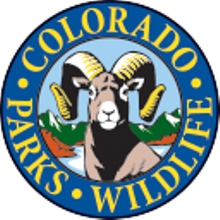elkduds
Well-known member
As an appointed rep to the Roundtable I am determined to share news from the group with online constituents. FYI, the Roundtable is a gathering of interested anglers, hunters, trappers that advise CPW. The group meets formally 2x/year, and informally as warranted. As an advisory group, most topics are discussed @ more length than can be included here. Below is a summary of news and topics from the summer virtual meeting:
First words out of every CPW regional rep's mouth: "@ least 150% increase in users on public lands this year, due to pandemic." The agency is not budgeted or staffed for that level of use, staff is doing best they can.
The western slope mtn lion plan will be finalized this fall, likely @ the Wildlife Commission's Sept. meeting. It happens Sept 2,3 and you can participate online via the CPW website.
Due to drought, many public shooting ranges are closed. The huge range @ Cameo/Palisade remains open, and is gaining national and international attention National competitions are held there annually, with an international match scheduled for next year.
Senate Bill 181 is law. It changes the focus of the oil/gas advisory committee more toward conservation, and requires more consideration of impacts on habitat and wildlife. CPW has staff dedicated to collaborating w oil/gas industries, reported better results than just pushing for new rules.
This year there was a 40% increase in applications for big game licenses over last year. Largest increase was among 25-45 year old.
Hunter's Ed is transitioning to 100% online.
Discussion of concern that some counties may close or require 14 day quarantine for hunters, as NM has. Leadership is not anticipating that problem in CO. CO is expected to see large increase in hunters who would have chosen NM.
Discussion of ways to educate and manage this huge influx of new hunters. Options include partnerships w conservation groups, outdoor industries. CPW has much info for newer hunters posted on CPW website.
CPW continues to be the 2nd largest of grant funders in CO, behind lottery/GOCO. Those grants typically emphasize strategic partnerships w groups and landowners @ the local level.
CPW is actively considering alternatives to requiring users of State Wildlife Areas to hold a hunting or fishing license. Federal rules prohibiting what were formerly called Habitat Stamps have eased.
CPW's priorities for funding are expanding public access, preserving migration corridors, preserving/improving habitat. Over $44 million in funding, and 30,000 acres of additional access reported so far.
Research continues on very low elk calf survival in the southwest region. this summer 57 calves were collared for this research.
A very large wildfire is burning in Glenwood Canyon, and a massive fire is north of Grand Junction. Both will significantly impact big game hunting access this fall.
Consideration of legalizing spearfishing in CO is dropped for the time being.
Trappers advocated for required reporting of # of furbearers harvested by each individual. That reporting is now mandatory, including all species except coyotes.
First words out of every CPW regional rep's mouth: "@ least 150% increase in users on public lands this year, due to pandemic." The agency is not budgeted or staffed for that level of use, staff is doing best they can.
The western slope mtn lion plan will be finalized this fall, likely @ the Wildlife Commission's Sept. meeting. It happens Sept 2,3 and you can participate online via the CPW website.
Due to drought, many public shooting ranges are closed. The huge range @ Cameo/Palisade remains open, and is gaining national and international attention National competitions are held there annually, with an international match scheduled for next year.
Senate Bill 181 is law. It changes the focus of the oil/gas advisory committee more toward conservation, and requires more consideration of impacts on habitat and wildlife. CPW has staff dedicated to collaborating w oil/gas industries, reported better results than just pushing for new rules.
This year there was a 40% increase in applications for big game licenses over last year. Largest increase was among 25-45 year old.
Hunter's Ed is transitioning to 100% online.
Discussion of concern that some counties may close or require 14 day quarantine for hunters, as NM has. Leadership is not anticipating that problem in CO. CO is expected to see large increase in hunters who would have chosen NM.
Discussion of ways to educate and manage this huge influx of new hunters. Options include partnerships w conservation groups, outdoor industries. CPW has much info for newer hunters posted on CPW website.
CPW continues to be the 2nd largest of grant funders in CO, behind lottery/GOCO. Those grants typically emphasize strategic partnerships w groups and landowners @ the local level.
CPW is actively considering alternatives to requiring users of State Wildlife Areas to hold a hunting or fishing license. Federal rules prohibiting what were formerly called Habitat Stamps have eased.
CPW's priorities for funding are expanding public access, preserving migration corridors, preserving/improving habitat. Over $44 million in funding, and 30,000 acres of additional access reported so far.
Research continues on very low elk calf survival in the southwest region. this summer 57 calves were collared for this research.
A very large wildfire is burning in Glenwood Canyon, and a massive fire is north of Grand Junction. Both will significantly impact big game hunting access this fall.
Consideration of legalizing spearfishing in CO is dropped for the time being.
Trappers advocated for required reporting of # of furbearers harvested by each individual. That reporting is now mandatory, including all species except coyotes.






